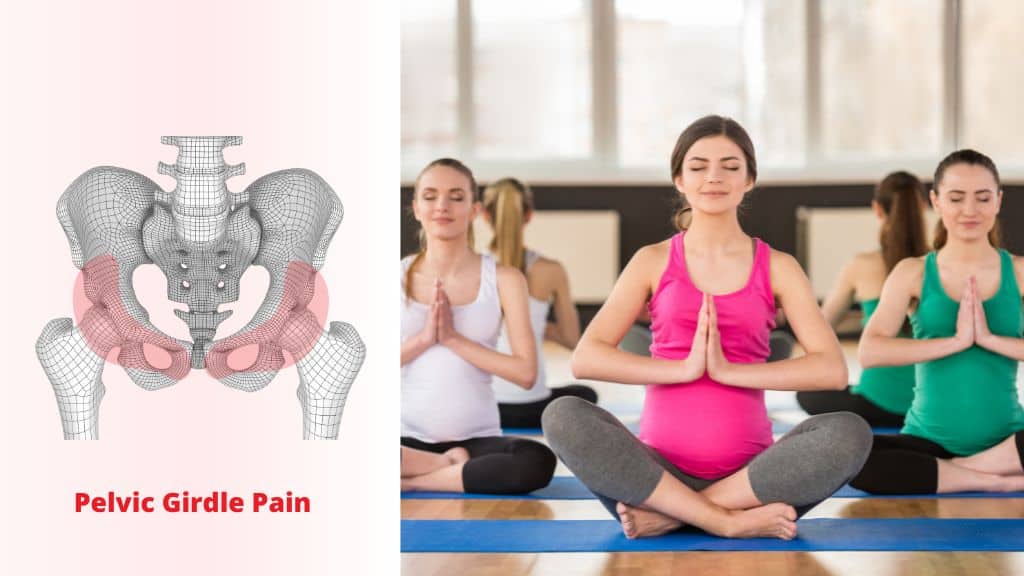
Table of Contents
Carrying an extra load on one part of your body may bring around a horde of issues that you may have never considered. It will make your move a bit differently and may throw your joints and muscles off the track. Some women experience pain in the pelvic region during their pregnancy. If you feel an intense shooting pain in your pelvis when you sit for long periods, shift in bed, or dress when you are pregnant, you might be experiencing pelvic girdle pain.
There’s no need to fret over it because we have brought to you the what’s what of pelvic girdle pain. Sit back and read on for more information on pelvic girdle pain.
What is Pelvic Girdle Pain (PGP)?
PGP is an umbrella term used to refer to pain in the pelvic region whether it is
- Some kind of pain in the area between the fold of your buttocks or the spine
- A faint pain at the back of your pelvis
- A stabbing sensation in the joint connecting the pubic bones at the front (symphysis pubis)
Many physiotherapists use terms like sacroiliac joint dysfunction (SI joint dysfunction) or symphysis pubis dysfunction (SPD) to refer to pelvic girdle pain (which now encompasses any kind of pain in the pelvic region). This discomfort may happen during pregnancy or soon after childbirth and can either be constant or come and go at certain intervals.
What Causes Pelvic Girdle Pain?
Pregnancy causes women’s bodies to release a hormone called relaxin to loosen the ligaments of their bodies so that the baby can grow. The joints also become quite delicate and contribute to muscle imbalances. This causes the joints holding the pelvis together to relax and even the small movements you make hurts the pelvic bones.
Relaxin is just one of the factors of pelvic girdle pain during pregnancy. There are several others such as pre-existing injuries or imbalances. Your leg or back muscles may pull, tighten, or weaken in the pelvic region. How you feel about moving, when you move, or how you move can also put an extra strain on your pelvic region.
Are You At Risk of Having Pain in The Pelvic Girdle?
It is impossible to isolate who can come down with pelvic girdle pain but here are a few factors that may be putting you at risk of contracting this intense discomfort:
- Prior trauma to your pelvis or back (it could be due to your routine of playing high-impact sports like gymnastics or figure-skating or an accident in the past)
- A history of low back pain or hip pain
- An increased BMI
- Ehlers-Danlos syndrome or joint hypermobility
- Previous births
All these situations put you at risk of developing pelvic girdle pain during pregnancy because they cause your pelvic muscles, bones, or joints to loosen and become flexible.
Where Does Pelvic Girdle Pain Affect You?
The pain in the pelvic girdle is mild to severe and may affect different areas such as
- The buttocks
- The lower back
- The side of the hip
- The inner thigh
- The groin
- The pelvic floor
- The symphysis pubis
Typically, this type of pain is intense and sharp which might often happen when you are involved in single-leg movements like putting your pants on while standing on one leg. Pregnant women tend to feel this pain when they stand or sit for too long or while getting out of bed.
Pelvic Girdle Pain: Relief Methods
If you are experiencing pelvic girdle pain during pregnancy, the best thing you can do is to visit a physiotherapist or a chiropractor who is trained in treating pregnant women. They will ask you for information about your medical history, observe how your movements are, and take a few tests to conclude if you have issues with joint mobility, strength, or stability. If you are in unbearable pain, they might limit the tests and go by your medical records.
PGP is not harmful in itself but it will affect your quality of life, movements, and the ability to take care of your cold and yourself. Early diagnosis can resolve this issue and prevent severe adverse effects. Your treatment program will depend on the level of pain you are experiencing, the reason behind your pain, and your physician’s ability. The doctors will try to ease or relieve the pain by finding better ways to move. Your pelvic girdle pain relief methods may include:
Soft Tissue Work
Certain muscles (like the muscles in your lower back) may tighten while others (such as muscles in your glutes, hips, or your core) might stretch or weaken during and after your pregnancy. You need to massage those areas or employ other releasing techniques to relax the tight muscles to ease the pain and prevent it from getting worse.
- Pelvic Floor and Core Strengthening
Consider the core of your body as a canister; there are 4 players:
- Multi Fluids
- Pelvic floor
- Transversus abdominis
- Diaphragm
These players have to work in unison to stabilize your movements so you need to be aware of those muscles and improve their control and motor coordination. Exercises that aim to strengthen your core and pelvic bones are the best way to bring about the said control.
- Sleep and Movement Modifications
Your healthcare provider will give you tips to modify those movements that cause pain such as getting dressed, lifting things or children, and getting out of bed. For instance, instead of balancing on one leg while you put your pants on, try sitting on the bed. Most of these pain-relieving techniques come from equal weight distribution so that your pelvis does not have to carry the entire burden.
Pro tip: Sleeping with a pillow wedged in between your legs will ease some of the discomforts of pelvic girdle pain during pregnancy and otherwise.
- At-home Exercises
Your practitioner will likely suggest some exercises that you can perform on your own. Or you could refer to medically approved exercises on YouTube or even follow an exercise app that strictly follows rules and regulations for pelvic girdle pain.
Do not follow hearsay advice on pelvic girdle pain exercises as different people experience different levels of pain. It is always best to consult a medical practitioner before performing any pain-relieving exercises otherwise it could add to the pain.
Pelvic Girdle Pain: Pregnancy and Labour
The pain in the pelvic girdle will not harm your baby in any way but it may add to your agony during labor and while giving birth. The pain will tend to increase when you twist into positions that put stress on just one part of your body. So make sure you stand balanced on both your feet, on all your fours, or on your knees. Do not shift all your weight on one of your legs because that’s an imbalance and it’s going to aggravate the pain. Also, do not let anyone force your hips or legs into a series of motions, especially while you are pushing.
The Bottom Line: When Does Pelvic Girdle Pain During Pregnancy Go Away?
For some pregnant women, the pain in the pelvic girdle ceases after delivering their little humans but that is not guaranteed. Give yourself time to heal because it took you almost 40 weeks to the little one you have in your hands. Re-stabilization of your body may take even a year or two and that’s completely okay. The time taken to heal varies individually and the amount of strain you took.
Pelvic Girdle Pain FAQs:
1. I have pain in pelvic girdle, what is making it worse?
2. When does pelvic girdle pain go away?
3. Where is pelvic girdle pain located?
4. Does massage help pelvic girdle pain?
5. Does walking help pelvic pain?

Dr. Mitali Rathod
Hi! I'm Dr. Mitali Rathod, and I have a deep passion for all things related to menstruation, hormones, pregnancy, and reproductive health. I enjoy simplifying these complex topics on social media to empower women with a better understanding of their bodies. My mission is to assist women in comprehending the intricacies of periods and reproductive health through a holistic and sustainable approach.
Over the past eight years and counting, I've been dedicated to helping women achieve their best possible health. This journey has included the safe delivery of over 3000 babies, both through vaginal and C-section procedures.
I take pride in my contributions to some of Ahmedabad's and Gandhinagar's best government hospitals, such as V.S. General Hospital, S.C.L. General Hospital, and Civil Hospital of Gandhinagar. My commitment to women's health and well-being continues to grow, and I look forward to making a positive impact on even more lives in the future.





